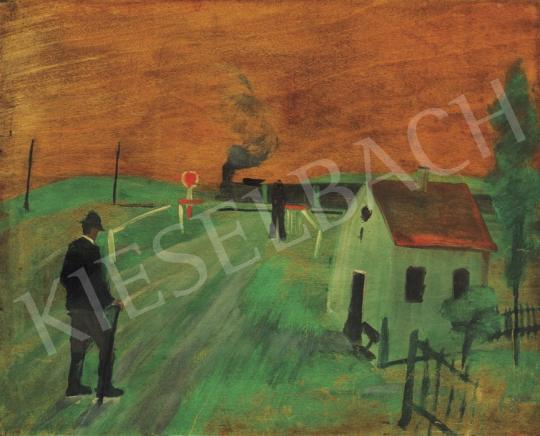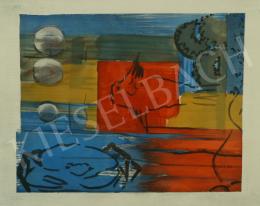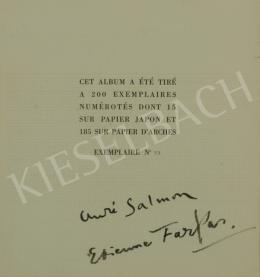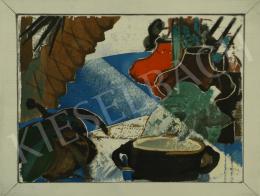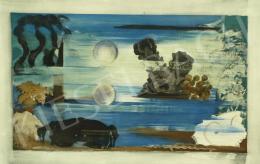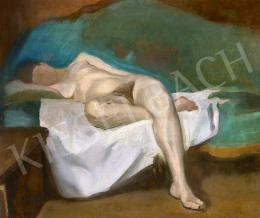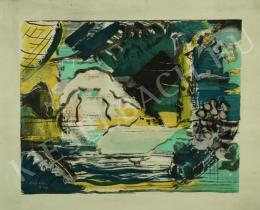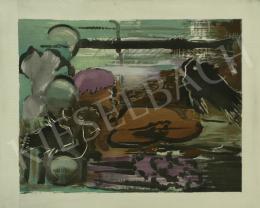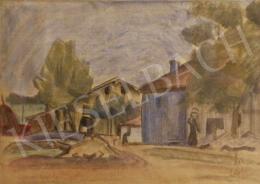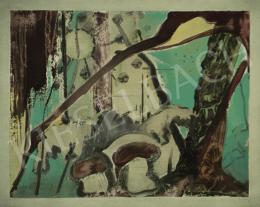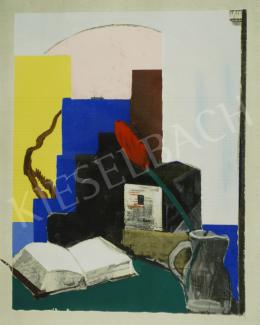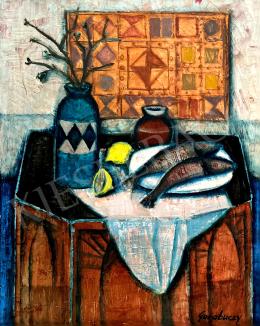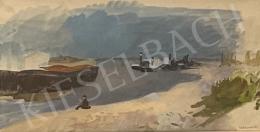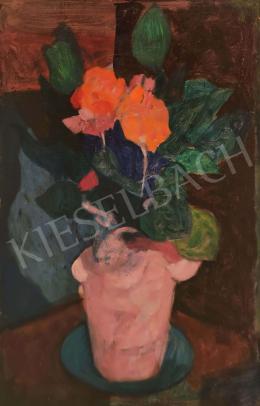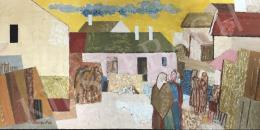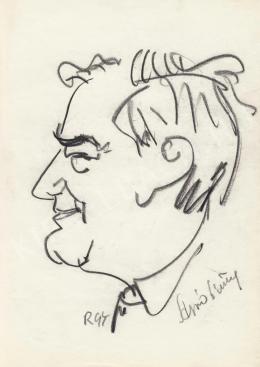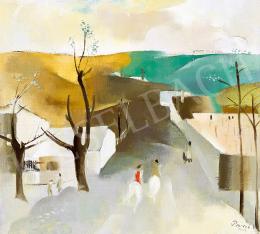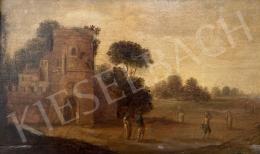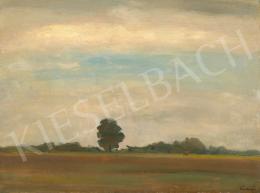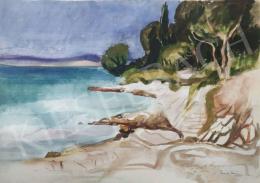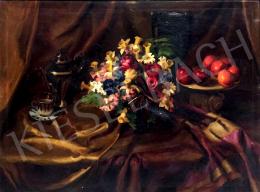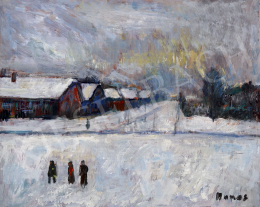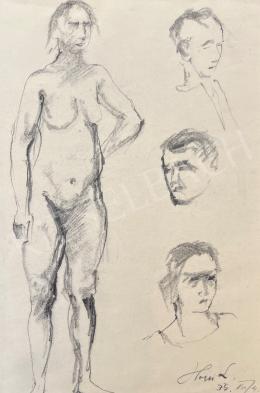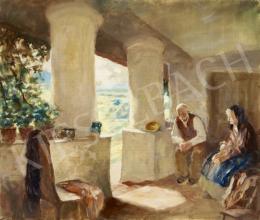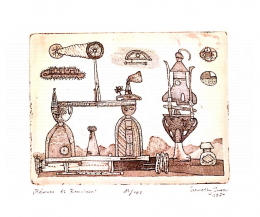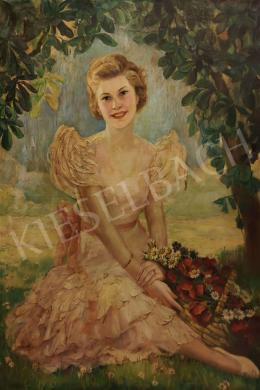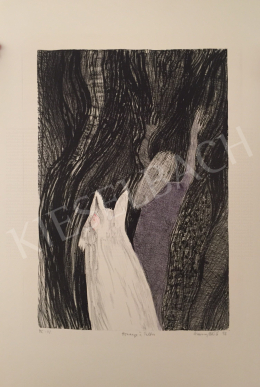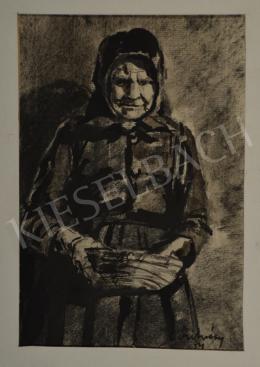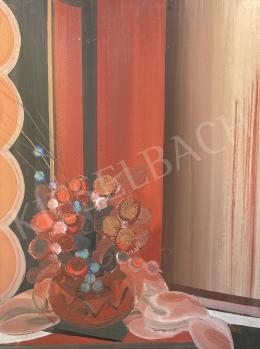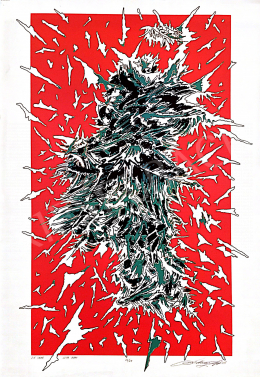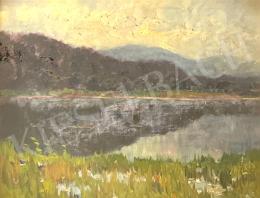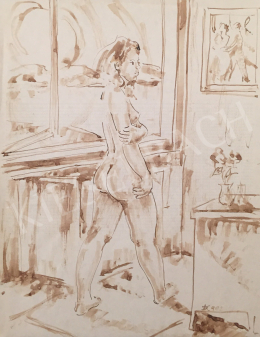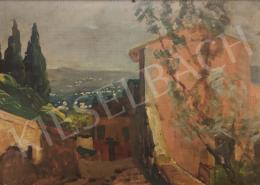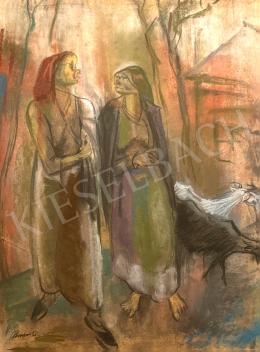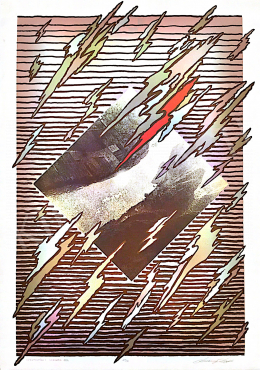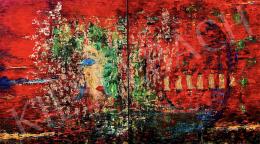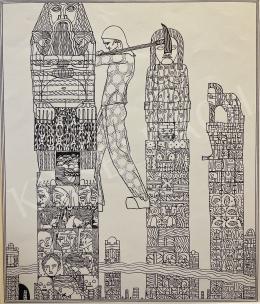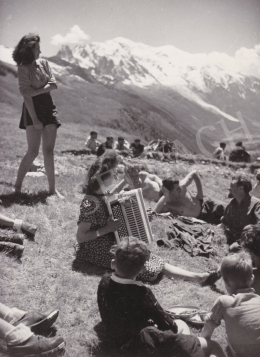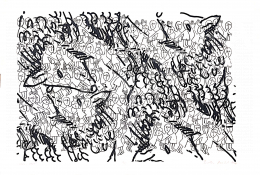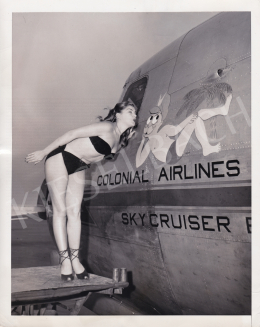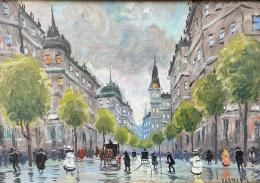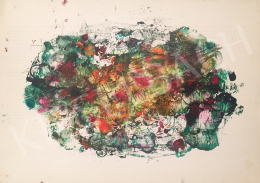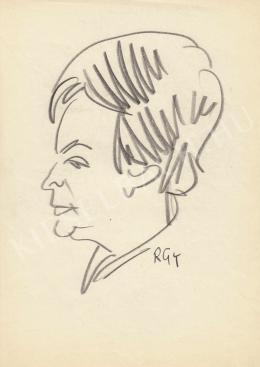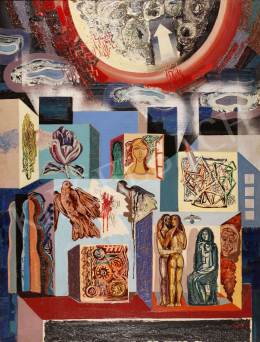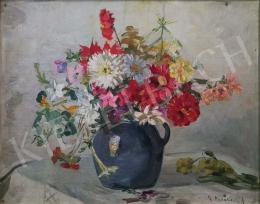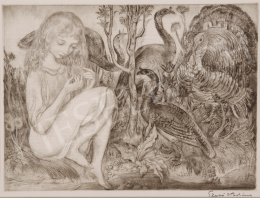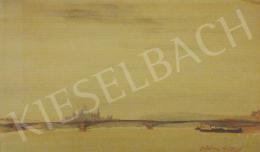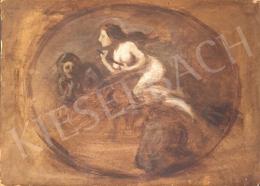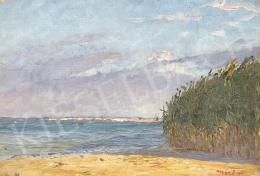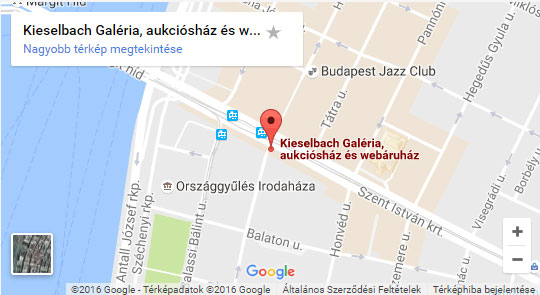Provenance:
Collection of Ferenc Glücks
Exhibited:
Exhibition of István Farkas' paintings and drawings. Ernst Museum CLVI. January, 1936 (Lot. No. 29. The Narrow-gauge Railway, 1200 pengős)
Exhibition held in commemoration of István Farkas. National Saloon. 1947.
BÁV auction sale No. 36. May, 1975 (Lot. No. 65. By the Rail Barrier)
Exhibition held in commemoration of István Farkas. Hungarian National Gallery. 1978
Reproduced:
Salmon, André: Étienne Farkas. Paris, 1935. (No. 4.)
Pesti Napló (Appendix), January, 12th, 1936.
Pataky, Dénes: Farkas István. Budapest, 1970. (No. 40.)
BÁV auction sale No. 36. May, 1975 (Lot. No. 65. By the Rail Barrier) Cat. No. 65.
Magyar Napló. December, 8th, 1982.
S. Nagy, Katalin: Farkas István. Budapest, 1994. No. 119.1
S. Nagy, Katalin: István Farkas. Budapest, 1999. No. 102.1.
Literature:
Salmon, André: Étienne Farkas. Paris, 1935
Nyilas Kolb, Jenő: Farkas István, Budapest, 1935.
Pataky, Dénes: Farkas István. Budapest, 1970.
S. Nagy, Katalin: Farkas István. Budapest, 1994
"The problem cleared out in the least, and the greatest mystery for many is the art of István Farkas." The author of these words is Jenő Nyilas-Kolb. He is the first monograph writer of the painter. With his book he tried to introduce Farkas' enigmatic personality and unique oeuvre to the audience. Since then the way to understanding his art has become easier due to innumerable studies, Hungarian and foreign language monographs. We know the oeuvre, we can observe the reproduction of each important pieces. However, the quoted statement is still true; studying a recently appeared masterpiece, the viewer cannot help feeling uncertain. The present painting is a good example of this; we can find formal and contextual analogous pieces, we can exactly put it into the biography of the artist, but the essence of the work of art cannot be caught. We just stand in front of its ingenuity without any help.
We exactly know the place and time of its birth. According to André Salmon's French monograph, he painted it in Paris, December, 1934. It was a closing tune of a successful period in the vivid atmosphere of Paris between the two world wars.
When he traveled to Paris in 1925, he rented a studio in the centre of the Parisian art life, on the Montparnasse. He was in close relationship with his former mates in La Palette; Alfréd Réth, and József Csáky, with the writer belonging to the circle of Apollinaire; André Salmon. He exhibited with Braque, Derain, Dufy, Foujita, Matisse, Picasso, and Giacometti. The contemporary art critics regarded him as a leading painter of the École de Paris. Among his collectors were Auguste Perret, Le Corbusier, and Chester Dale (one of the greatest American art collector). This ideal career was broken with the death of his father in 1932. He had to move home to lead the family enterprise (a publishing house), but he rented a studio in Paris for years, and whenever he could, went to paint there for one or two months. This painting is a result of one of these short periods.
This picture is like a dream-like fantastic stage, where the objects of the artist's visionary world are the main characters. Their relation is not determined by the rules of perspective. There are some exceptions, for example in the case of the parallels of the railways, but these exceptions are for the sake of the emotional effect. These irrational, surrealist spaces, timeless compositions are the basis of the relation between Farkas' art, and the art of the Italian scuola metafisica, especially that of Giorgio de Chirico. Although their way of painting is completely different, we can still find some sort of close relationship in their work. As André Breton puts it: "It is very probable, that the human spirit reaches a point where there is no opposition between life and death, reality and fantasy, past and future, above and beneath." Farkas' art does not fall under Surrealism, still, Breton's words are characteristic to his world as well.
The motifs of the Narrow-gauge Railway can often be seen in Farkas' oeuvre. The fence, the small house, the train with a smoking chimney, the barrier with the red light induce complicated associations in the viewer.
The painting is characteristic piece of Farkas' mature period. It cannot be proved by only stylistic features, but also by the applied technique. It is painted - as all his great-size main works - on panel with his characteristic, self-made tempera. What makes it unique is, that he omitted the white basement, and used the network of the wood emphatically. Mednyánszky occurs to us when seeing this artistic solution that he often applied. László Mednyánszky was his master. Apparently, his influence was strong enough for decades to turn up over and over again. As Jenő Nyilas-Kolb put it: "His words were seeds which sometimes bloomed unexpectedly after decades. The Tolstoyan-Buddhist artist had a great influence on Farkas' spirit prone to mysticism. He taught him to believe in the deep relationship between Cosmos and Painting."
The same relationship between the two painters is emphasized by the person of the painting's past owner. Ferenc Glücks was an outstanding art collector of the twentieth century. He founded his collection between 1945 and 1948, based on mostly the former Wolfner collection (Wolfner was Farkas' original name), purchased from the artist's children. He collected works by Mednyánszky, István Nagy, Egry, and István Farkas. Nyilas-Kolb's words are most characteristic to Farkas' art, but are true to all the four painters in the collection:
"His art, the optical and spiritual performance of his pictures are not among the phenomena that are popular among great masses of people. He does not help making friend with his pictures, moreover, it seems as if he tries to make it difficult. This art is so sophisticated, so symbolic, such a mixture of raw instincts and extreme spiritualism, that it demands a serious attention from the viewer. Who wants to enjoy it, has to conquer it, and then get back to it over and over again. This painting almost indulges in the joy of making obstacles to the approach with a surprisingly odd colour."
Péter Molnos






